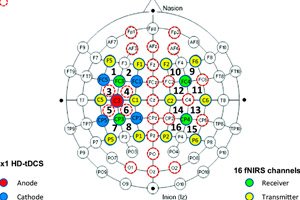
All iLive content is medically reviewed or fact checked to ensure as much factual accuracy as possible.
We have strict sourcing guidelines and only link to reputable media sites, academic research institutions and, whenever possible, medically peer reviewed studies. Note that the numbers in parentheses ([1], [2], etc.) are clickable links to these studies.
If you feel that any of our content is inaccurate, out-of-date, or otherwise questionable, please select it and press Ctrl + Enter.
The effectiveness of brain stimulation depends on learning ability, not age
Last reviewed: 03.07.2025
 ">
">As we age, our cognitive and motor functions deteriorate, affecting independence and quality of life. Among the technologies aimed at solving this problem, anodal transcranial direct current stimulation (atDCS) is of particular interest. This method uses a weak electrical current to modulate the activity of neurons, without the need for surgical intervention.
However, atDCS studies have shown conflicting results. One reason is thought to be differences in individual susceptibility to stimulation, which may depend on factors such as age, basic abilities and previous experience. To get to the bottom of this, EPFL scientists led by Friedhelm Hummel investigated how natural learning abilities influence the effectiveness of atDCS.
Key findings of the study
A study published in the journal npj Science of Learning shows that:
- People with less efficient learning strategies (suboptimal learners) benefit more from stimulation, showing accelerated improvements in task accuracy.
- Those who are initially more efficient learners (optimal learners) may even experience negative effects from stimulation.
This finding confirms that atDCS has a restorative rather than an ameliorating effect, which is particularly important for neurorehabilitation.
Methodology
The scientists recruited 40 participants: 20 middle-aged (50–65 years) and 20 elderly (over 65 years). The groups were divided into those who received active stimulation and those who received a placebo. The participants performed a sequential keystroke task (motor learning) for 10 days.
Using a machine learning algorithm, participants were classified as optimal or suboptimal learners based on their initial performance, allowing them to predict which of them would benefit from stimulation.
Conclusions
- Suboptimal learners improved task accuracy more quickly under atDCS.
- Optimal learners showed a tendency to deteriorate in performance when exposed to stimulation.
- The effects of stimulation were independent of the age of the participants.
Future of Application
These findings could change the approach to neurorehabilitation and other forms of treatment. Instead of a one-size-fits-all approach, the scientists propose developing personalized stimulation protocols tailored to the individual needs of the patient.
Pablo Maceira, first author of the study:
"Using machine learning has helped us understand how different factors influence the individual effects of brain stimulation. This opens the way to maximizing its benefits for individual patients."
In the future, such algorithms could help doctors determine which patients will benefit from brain stimulation therapy, improving rehabilitation outcomes after stroke or brain injury.
The study was published in the journal npj Science of Learning.
